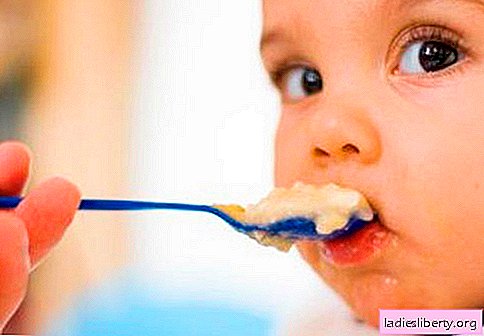
Plum is a popular fruit crop. Of the stone species in importance, it immediately follows the cherry. It has a high yield, excellent taste, good processing, promising for industrial gardens. However, in the varietal composition of the Non-Black Earth region, plum occupies only 7%. Why is that? Yes, because this breed does not bear fruit regularly and even often just does not bloom.
Why doesn’t the plum blossom and fruit?
Why doesn’t the plum blossom?
The fruit buds of this stone fruit culture are not resistant to frost and often die from them. And the yield directly depends on the number of "survivors" and capable of tying the fruits of the eyes.
With full freezing of the flower buds of the crop, one does not have to wait. If 60-70% is lost, the collection of plums from one tree can be from three to thirty kilograms.
Plum blossoms in the snow

Freezing of trees happens not only in severe winters with large frosts. Thaws with subsequent cold snap are most dangerous for stone fruits. The dormancy period of these crops is short and when warming they quickly start to grow, having decided that spring has come. Unexpected frost can cause serious damage to the tissues and kidneys of the tree. Temperature swings are dangerous both in the middle zone and in the south of the country. They cause enormous damage to trees, even to the complete absence of fruiting and even freezing.
Most often this happens in early spring or late winter. Plum trees that have moved to growth suffer even with a slight frost. First of all, fruit buds are damaged. Some time after freezing, they turn brown, dry and crumble without opening. With minor damage, the flowers bloom very slowly, not fully opening. But these kidneys, unfortunately, are also not viable and, having dried up, fall off.
Frosts can damage flower pistils. In this case, the crop is also lost - in whole or in part.
Frost is also dangerous for the fruit that sets in and damages them even at -1.1 ° C. First of all, the embryo in the seed dies. Fruits show off shortly after freezing. It’s even more offensive when the tree blooms lushly, but does not give a crop. The branches are literally "doused" with flowers, but there is no result. The reasons for this phenomenon may be different.
Why does a plum blossom, but not bear fruit?
Pollination
One reason is the lack of pollination. Plum is a cross-pollinated crop. To set fruit, you need a pollinator - a tree of another variety that blooms simultaneously with the first. At different flowering periods, pollination may not occur.
Fertilization of flowers can be prevented by weather conditions: cold, rain or strong wind. Bees pollinate the plum, and in bad weather they do not fly.
For stable fruiting, it is good to have at least one self-fertile tree on the plot. Self-fertile plants can tie fruits from pollination with their own pollen.
They are good pollinators for other plums.
Highly fertile varieties: Stanley, Chachak early, Hungarian Italian, Hungarian Italian, early Kabardian, Shpet, Wenger of Wangenheim, Chachak native, Renklod Ulensa, Hungarian Azhansky, Chachak lepotitsa.
Partially self-fertile varieties: Bogatyrskaya, Opal, Verity.
The bulk of the varieties are self-infertile: Blufrey, Chachak Naibolia, Greengod Altana, Fantasy, Empres, Peach, Voloshka, Hungarian Donetsk, etc.
Self-fertile varieties for the middle band: Blue Gift, Alexy, Sukhanovskaya.
Shedding fruit
Physiological shedding of fruits is observed after abundant flowering and tying a large number of fruits. The tree is simply not able to "feed" such a crop and part of it discards.
Another thing is pests and diseases. It happens that the plum has blossomed, and the fruits are tied. But then the ovary falls, carpeting the ground under a tree. And for some reason, the plum again does not bear fruit.
Pest ovary-causing pests
Geese.
Refers to weevil beetles. Its length without a proboscis is about half a centimeter. Beetle beautiful iridescent color - raspberry with copper and green tint. It pricks proboscis the fruits of various fruit crops, including plums. One individual is able to damage more than a hundred fruits. A goose lays an egg in a gnawed groove.
Brant

The hatched larva eats inside the fetus. At the next stage of development, the larva from the fallen fetus moves to the ground, where it hibernates. It turns into a chrysalis only next summer. From the pupated larvae, beetles hatch in late summer and early autumn. They settle in the trees, eating buds and young shoots, late apples and pears. Ten beetles are able to completely destroy the crop on one tree. They hibernate under fallen leaves.
Black plum sawfly.
Females lay eggs in flowers of plum crops: thorns, cherry plums, plums. Larvae gnaw flesh and bone. The ovary damaged by the sawfly crumbles. Each larva damages approximately five fruits. Then it goes into the ground for pupation. There, and winters at a depth of ten centimeters.
Sawfly larva

To combat the pest, the trees are treated before flowering and after it with Intavir preparations or sparks (1 tablet per 10 liters of water). Damaged fruits are destroyed.
Plum Thorn Bear.
The female begins to lay eggs during the flowering of the plum. And he continues to do this for another two weeks, laying eggs in a green ovary. The centipede is multinivorous and harms many stone fruit crops. The larva, having been born, gnaws a bone. By July, the fruits begin to fall. Larvae hibernate in fallen fruits inside the seed. Since spring, the life cycle of the pest is repeated.
Bunny

Under adverse conditions, the bear may be in a "sleeping" state for two years. This ensures its survival as a biological species. Spraying from the centipedes is carried out at the end of flowering, when three quarters of the petals have already showered. Re-processing after ten days. Recommended preparations: Kinmix, kalbofos, etc.
The fruit damaged by the pest is collected and disposed of: burned or drowned in water. It is not recommended to just bury them. The centipede will get out of the soil and continue to harm the plum trees.
Plum moth
It can also cause shedding of fruit. Butterflies lay eggs on the fruit. After about a week, the caterpillars hatch. For several hours they crawl along the leaves and fruits. During this period, they are vulnerable to pesticides. Then the caterpillar bites into the fruit and advances to the peduncle, eating the flesh. The fruits fall. One caterpillar lives in one fruit. The caterpillar’s entry point can be identified by a drop of protruding gum.
In the northern regions, the codling moth develops in one generation. In the south, two or three manage to get out.
To combat the codling moth carry out three to four sprayings:
1. Massive years of butterflies (first decade of June).
2. In late June - early July, but not earlier than two weeks after the previous treatment.
3. The end of July - against the 2nd generation.
The following insecticides are used: mospilan, ratibor, confidor, all pyrethroids, match.
Biological preparations of bitoxibacillin or lepidocide can be used.
In this case, the number of treatments increases to six. Spray every ten days.











